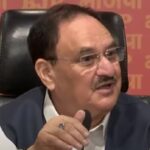In a stark contrast, India has made significant strides in reducing poverty, lifting 171 million people out of extreme poverty between 2011-12 and 2022-23, according to the World Bank. India’s extreme poverty rate has declined sharply to 5.3% over the past decade, from 27.1% in 2011-12.
This achievement comes as Pakistan faces significant challenges, with nearly 45% of its population living in poverty and 16.5% in extreme poverty.
According to a report by News18, the World Bank’s latest projections indicate that Pakistan’s poverty rate stands at 42.4%, with 1.9 million additional people falling into poverty in 2024-25. The country’s economic growth rate of 2.6% remains insufficient to reduce poverty, with the population growing at nearly 2% annually. Pakistan’s agriculture sector is also facing significant challenges, including a 40% reduction in rainfall, pest attacks, and shifting production choices, leading to declining crop yields.
Crop yields in Pakistan are projected to decline, ranging from 29.6% for cotton to 1.2% for rice, limiting sectoral growth to under 2%. The water flow to Pakistan’s Punjab has also been severely affected due to India’s decision to put the Indus Waters Treaty in abeyance, further stressing agriculture yields. According to official data, there has been a 15% drop in water flow in the Indus Water Basin in Punjab, with many Pakistani dams nearing the dead level.
The World Bank report highlights that rural poverty is expected to rise slightly, while real incomes for agricultural workers are projected to fall 0.7% in FY25. Food security concerns loom large, with an estimated 10 million people at risk of acute food insecurity in rural areas. Consumption-based inequality in Pakistan has climbed nearly 2 points since FY21, holding steady just below 32 over the past year.
“With agriculture employing approximately half of the working poor, rural poverty is expected to rise slightly (0.2 percentage points), while real incomes for agricultural workers are projected to fall 0.7 per cent in FY25. Food security concerns loom large, with an estimated 10 million people at risk of acute food insecurity in rural areas,” the report says.
The report said the consumption-based inequality in Pakistan has climbed nearly 2 points since FY21, holding steady just below 32 over the past year. “However, actual inequality is likely higher since surveys typically underrepresent wealthy households. Additionally, external factors such as evolving global trade dynamics could influence the pace of economic recovery and subsequent progress on poverty reduction.”
India’s success in reducing poverty and Pakistan’s struggles may have implications for how global aid is perceived to be utilized. India has previously raised concerns that Pakistan misuses global aid for purposes such as terrorism against India. The World Bank data could further highlight the need for scrutiny in how aid is allocated and utilized in Pakistan.
While both countries had similar poverty rates in the past, India has made significant progress in reducing poverty, whereas Pakistan continues to struggle. The World Bank’s revised threshold poverty line of $3 per day provides a more accurate measure of poverty, and India’s achievement in lifting millions out of poverty is a testament to its economic growth and development efforts.
The contrasting poverty rates between India and Pakistan highlight the need for Pakistan to address its economic and agricultural challenges. With a significant portion of its population living in poverty, Pakistan requires sustainable economic growth and effective utilization of global aid to reduce poverty and improve living standards. As the global community continues to work towards reducing poverty, the cases of India and Pakistan serve as important examples of the complexities and challenges involved.
Stay informed on all the , real-time updates, and follow all the important headlines in and on Zee News.








